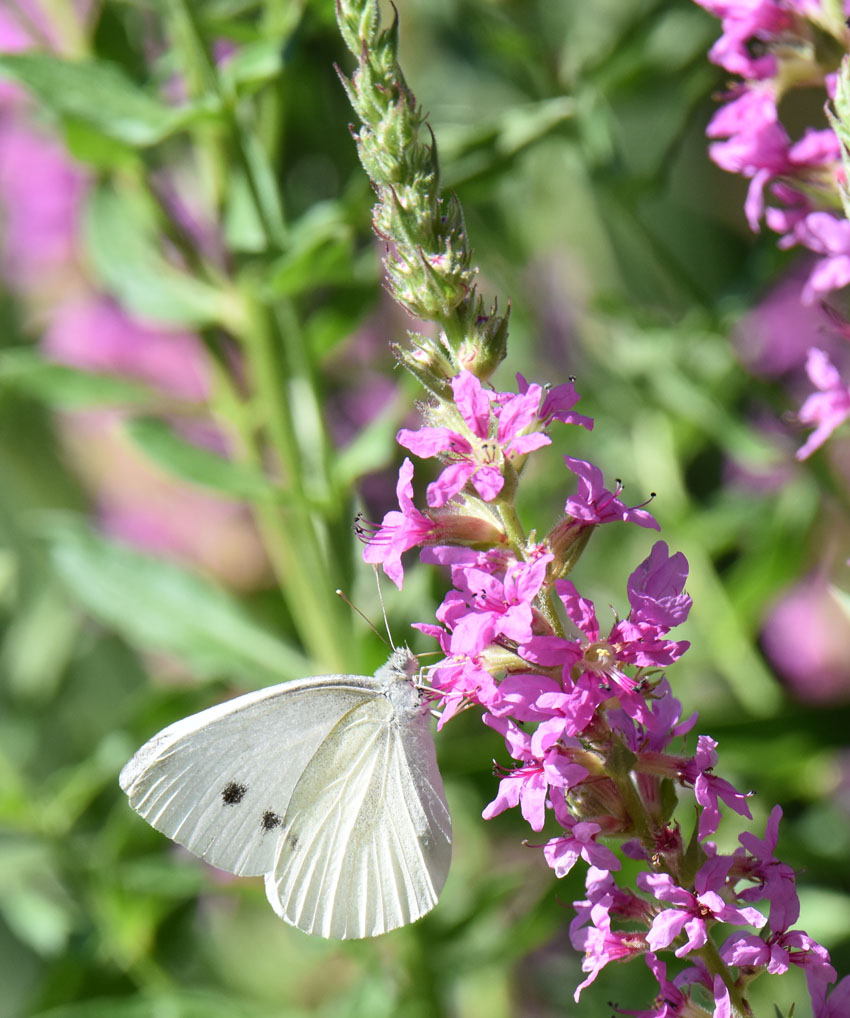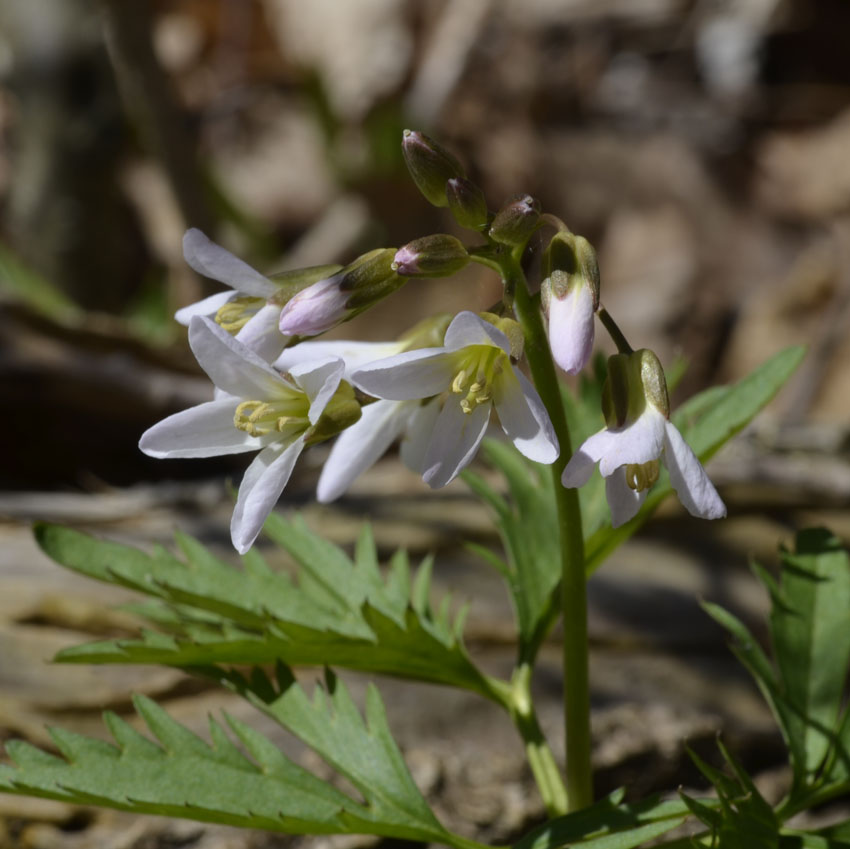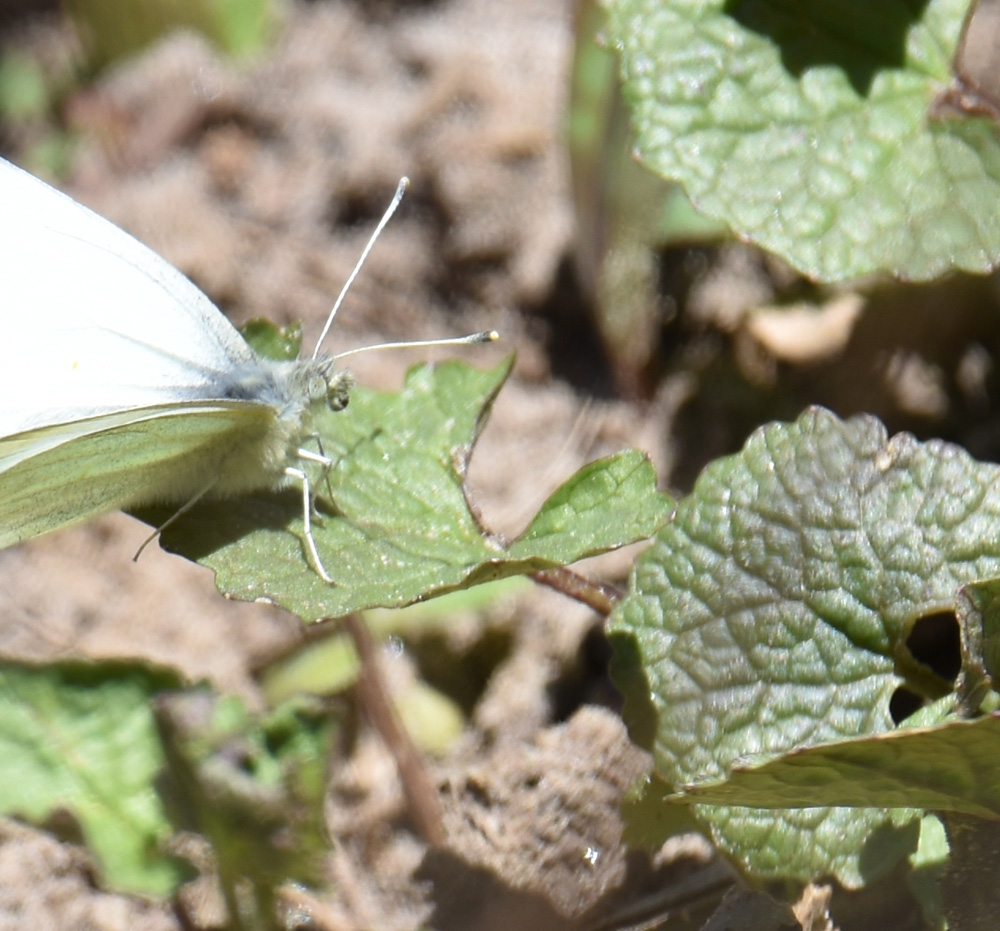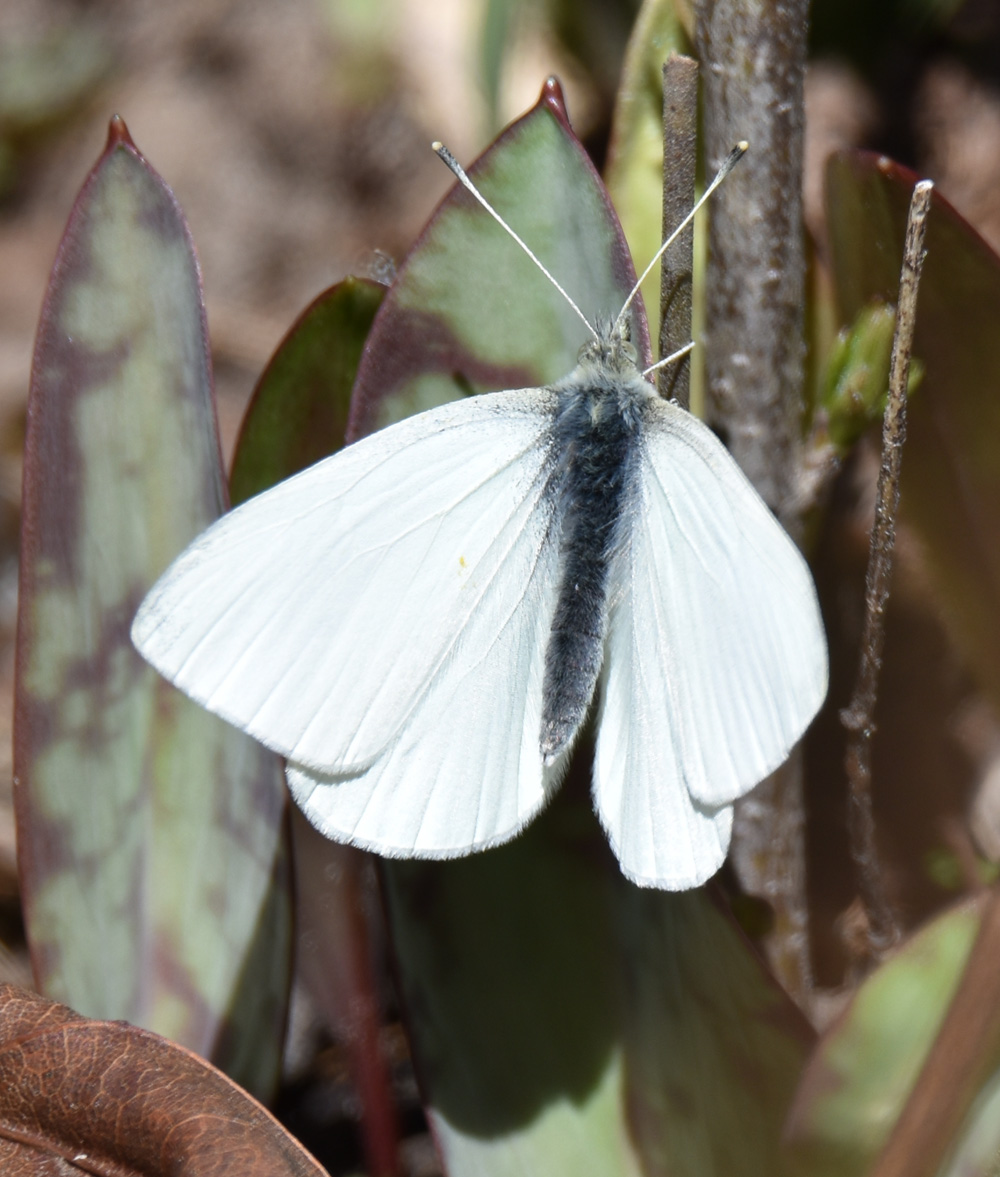I’m used to seeing Cabbage White butterflies and if you live in southern Canada you probably are too. They’re the medium-sized white butterflies dancing around the dandelions in your (or your neighbour’s) back yard. They’re the ones fluttering over the grass at the sides of the roads. They’re the ones bothering vegetable gardeners. They have black or dark grey tips to their upper or front wings and they have black dots in the middle of those forewings. They are not the only white butterfly in Ontario though.
Where Did I Find a Mustard White Butterfly in Mississauga?
When I was growing up, my brother used to raise and release certain butterflies and moths, starting them from either the caterpillar or chrysalis/pupa stage. I remember he had more than just Cabbage White butterflies so I’ve been looking for other kinds for over a year now.
My search has been pretty half-hearted: basically, I take a photo of every butterfly I see and hope that one is something different. This winter, while looking at last May’s photos taken at the Rattray Marsh, I realized that one was different. It wasn’t a Cabbage White: It was a Mustard White!
I had thought it might be different at the time. But when the butterfly flew, I thought I saw black spots on its wings. (I must have mixed it up with a nearby Cabbage White.) So I forgot about my photos and continued on looking at the wildflowers.

This is what I thought I saw: a Cabbage White.
Checking the photos in January, I realized that the butterfly did not have dark tips to the wings nor was there any sign of spots even on photos taken from various angles.
I asked other naturalists for an opinion and Reuven Martin kindly identified my find as a Mustard White.
Where Should I Look for Mustard White Butterflies?
I discovered a major flaw in my search for white butterflies when I read the entries in the ROM Field Guide to Butterflies of Ontario. Apparently the two other white butterflies I might see, the Mustard White and the West Virginia White, are usually found in forested areas, not in grassy meadows like the Cabbage Whites. Oops!

Toothwort at Sixteen Mile Creek in Oakville
Now that I know I could find a Mustard White in Mississauga, I think I’ll go back to the Rattray in the spring and look much more closely. I’ll also check Sixteen Mile Creek in Oakville where Toothwort plants are quite common. The caterpillars of both the Mustard White and the West Virginia White butterflies like to eat Toothworts. Toothwort plants are in the Mustard family.
Is Garlic Mustard Edible to Mustard White Caterpillars?
There is another almost all-white butterfly in Ontario, the West Virginia White. According to the Nature Conservancy of Canada website, the West Virginia White’s caterpillars are poisoned by toxic chemicals if they eat Garlic Mustard leaves and its eggs even often fail to hatch properly on this invasive plant.
Reading this information made me wonder whether Garlic Mustard is a problem for Mustard White butterflies. Both West Virginia White and Mustard White butterflies like to lay their eggs on Toothwort plants and other native Mustards. Are Garlic Mustard leaves toxic to both types of caterpillars?

The butterfly I saw did stop briefly on some Garlic Mustard leaves.
I expect to find that Garlic Mustard leaves are toxic to Mustard White caterpillars: If not, I would expect there to be a population explosion of Mustard White butterflies given how abundant and lush the Garlic Mustard plants have become across southern Ontario. (For example, there has been a noted substantial increase in the populations of Wild Indigo Duskywing butterflies recently. That’s because their caterpillars can thrive on a new food source that has been widely planted by humans: Crown Vetch.)
According to the US National Parks Service website, chemicals in the leaves of Garlic Mustard are toxic to three native caterpillars: those of Mustard Whites, West Virginia Whites and Falcate Orange-tips.
According to a PhD thesis by Samantha L. Davis, the Garlic Mustard plants contain sinigrin, a compound which encourages the Mustard White butterflies to decide that the plants are a good place to lay their eggs. She also says that several chemicals in the leaves “deter feeding and reduce survival in the 1st and 4th instars” of the caterpillars. (In the thesis study, the other type of butterfly, the West Virginia Whites were placed in an enclosure with native mustards and garlic mustard. ALL of their eggs were laid on the Garlic Mustard, even though the caterpillars when hatched stopped eating if left on the Garlic Mustard and only resumed eating if placed on the native mustards.)
Newer studies (Keeler and Chew in 2008) show that it is possible that after some 60-100 generations of exposure to Garlic Mustard, Mustard White caterpillars may be adapting to withstand the chemicals in the leaves. (pg 10 of https://etd.ohiolink.edu/!etd.send_file?accession=wright1431882480&disposition=inline ) Unfortunately, that means after about 50 years! Apparently, a small number of caterpillars feeding on the Garlic Mustard plants are surviving to pupate, just not very many.
If so, maybe there will be a Mustard White population boom in another few years and we might have a native solution to an alien weed problem! (That’s just my wish, not a prediction made in any of the papers I was reading.)
In the meantime, I think I’ll look more closely for another Mustard White this spring.
Related Reading
- Evaluating threats to the rare butterfly, Pieris virginiensis
- Keeler, M. S. and Chew, F. S. Escaping an evolutionary trap: Preference and performance of a native insect on an exotic invasive host. Oecologia, 156(3):559–68, June 2008.
- Keeler, M. S., Chew, F. S., Goodale, B. C., and Reed, J. M. Modelling the impacts of
two exotic invasive species on a native butterfly: top-down vs. bottom-up effects. The
Journal of Animal Ecology, 75(3):777–88, May 2006. - Butterflies of June along the Credit River Valley
- Butterflies of November
Join In
Have you seen any White butterflies in your area? Please share your sighting with a comment.

